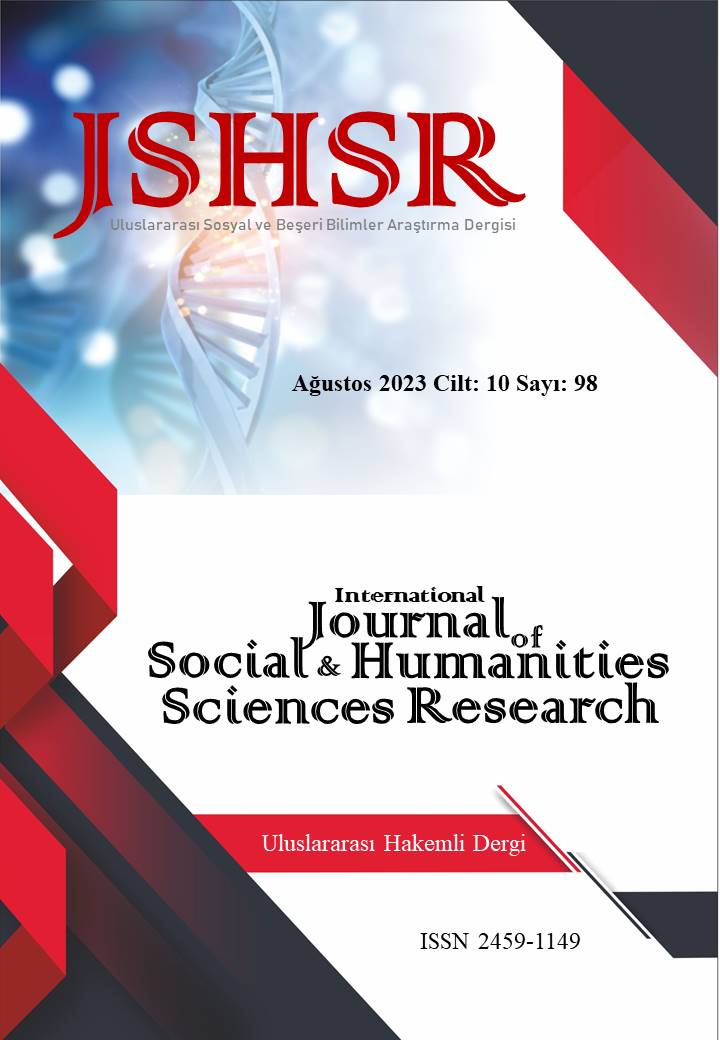Labor Productivity and Economic Growth in Selected Latin American Countries
DOI:
https://doi.org/10.5281/zenodo.8309614Keywords:
Labor Productivity, Economic Growth, Latin American CountriesAbstract
Despite the fact that labor productivity, beyond being an indispensable gauge of labor's efficiency, encompasses a wider economic spectrum that integrates technological growth, skill advancement, and infrastructural enhancements; limited studies delve into exploring the nexus between labor productivity and economic growth. The main motivation of this work is to investigate the relationship between labor productivity and economic growth in Latin American countries namely, Argentina, Bolivia, Brazil, Chile, Colombia, Costa Rica, Mexico, and Peru during the period from 1990 to 2018. The cross-sectional dependency of the panel is examined employing the Breusch and Pagan (1980) CDLM2 and the LMadj test. The homogeneity of the variable coefficient is investigated with the Swamy Homogeneity Test. Furthermore, the presence of a unit root is examined by employing the CIPS test. Moreover, the cointegration nexus between the variables had been analyzed employing the Durbin-Hausmann test. Finally, the Dumitrescu and Hurlin (2012) causality test has been applied to determine the causal nexus between the variables. The results affirm the presence of a cointegration nexus between the variables. Furthermore, there is a bidirectional nexus between labor productivity and economic growth during the studied interval, emphasizing the significance of investing in productivity-enhancing measures.
References
Adak, M. (2009). Total Factor Productivity and Economic Growth. İstanbul Ticaret Üniversitesi Sosyal Bilimler Dergisi, (15), 49-56.
Alancioğlu, E., & Şi̇t, M. (2019). Brics Ekonomilerinde Toplam Faktör Verimliliği ile Ekonomik Büyüme Ilişkisinin Panel Veri Analizi: 2000-2016 Dönemi. Akademik Araştırmalar ve Çalışmalar Dergisi (AKAD), 11(20), 29-40. https://doi.org/10.20990/kilisiibfakademik.457238
Auzina-Emsina, A. (2014). Labour Productivity, Economic Growth and Global Competitiveness in Post-Crisis Period. Procedia- Social and Behavioral Sciences, 156(11), 317-321. https://doi.org/10.1016/j.sbspro.2014.11.195.
Breusch, T., & Pagan, A. (1980). The Langrange Multiplier Test and Its Application to Model Specification in Econometrics. Review of Economic Studies, (47), 239-253.
Doğan, E. (2022). Toplam Faktör Verimliliği, Finansal Gelişme ve İnovasyon Ekonomik Büyümeyi Artırıyor Mu? Anasay, (19), 137-153. https://doi.org/10.33404/anasay.1039031.
Dolman, B., Parham, D., & Zheng, S. (2007). Can Australia Match US Productivity Performance? SSRN Electronic Journal. https://doi.org/10.2139/ssrn.1018881.
Dumitrescu, E. I., & Hurlin, C. (2012). Testing for Granger non-causality in heterogeneous panels. Economic Modelling, 29(4), 1450-1460.
Gündüz, M., Alakbarov, N., & Erkan, B. (2018). Türkiye’de Ekonomik Büyümenin Belirleyicisi Olarak Toplam Faktör Verimliliği. Dumlupınar Üniversitesi Sosyal Bilimler Dergisi, (57), 253-270.
Hacker, R. S., & Hatemi-J, A. (2003). How Productivity and Domestic Output Are Related to Exports and Foreign Output in the Case of Sweden. Empirical Economics, 28(4), 767-782.
Hark, R., & Gökdemi̇R, L. (2023). Türkiye Ekonomisinde Verimlilik ve Ekonomik Büyüme Arasındaki İlişkinin ARDL Sınır Testi Yaklaşımıyla İncelenmesi. Verimlilik Dergisi, 57(1), 239-252. https://doi.org/10.51551/verimlilik.1164456.
Işık, C. (2016). Türkiye’de Toplam Faktör Verimliliği ve Ekonomik Büyüme İlişkisi. Verimlilik Dergisi, (2), 45-56.
Jalava, J. (2002). Accounting for Growth and Productivity: Finnish Multi-Factor Productivity 1975-99. Finnish Economic Papers, 15(2), 76-86.
Jorgenson, D. W., & Vu, K. (2005). Information Technology and the World Economy. The Scandinavian Journal of Economics, 107(4), 631-650.
Kamacı, A., Ceyhan, S., & Peçe, M. A. (2019). Toplam Faktör Verimliliğinin Ekonomik Büyümeye Etkisi: 15 OECD Ülkesi İçin Panel Veri Analizi. Artvin Çoruh Üniversitesi Uluslararası Sosyal Bilimler Dergisi, 5(1), 22-36. https://doi.org/10.22466/acusbd.539877.
Khadimee, M. (2016). The Sources of Economic Growth in Iran’s Economy. Journal of Economics Library, 3(4), 621-631. https://doi.org/10.1453/jel.v3i4.1103.
Kurt, S., & Terzi̇, H. (2010). İmalat Sanayi Dış Ticareti Verimlilik ve Ekonomik Büyüme İlişkisi. Atatürk Üniversitesi İktisadi ve İdari Bilimler Dergisi, 21(1), 25-46.
Mahmood, Z., & Siddiqui, R. (2000). State of Technology and Productivity in Pakistan’s Manufacturing Industries: Some Strategic Directions to Build Technological Competence. The Pakistan Development Review, 39(2), 1-21. https://doi.org/10.30541/v39i1pp.1-21.
Nehru, V., & Dhareshwar, A. (1994). New Estimates of Total Factor Productivity Growth for Developing and Industrial Countries. Policy Research Working Paper Series, (1313). The World Bank.
Solow, R. M. (1957). Technical Change and the Aggregate Production Function. The Review of Economics and Statistics, 39(3), 312. https://doi.org/10.2307/1926047.
Westerlund, J. (2008). Panel cointegration tests of the Fisher effect. Journal Of Applied Econometrics, 23, 193-233.
Downloads
Published
How to Cite
Issue
Section
License
Copyright (c) 2023 INTERNATIONAL JOURNAL OF SOCIAL HUMANITIES SCIENCES RESEARCH

This work is licensed under a Creative Commons Attribution 4.0 International License.


